12 Feb 2025
Android vs. iPhone: The Ultimate Showdown
Shaun Bell
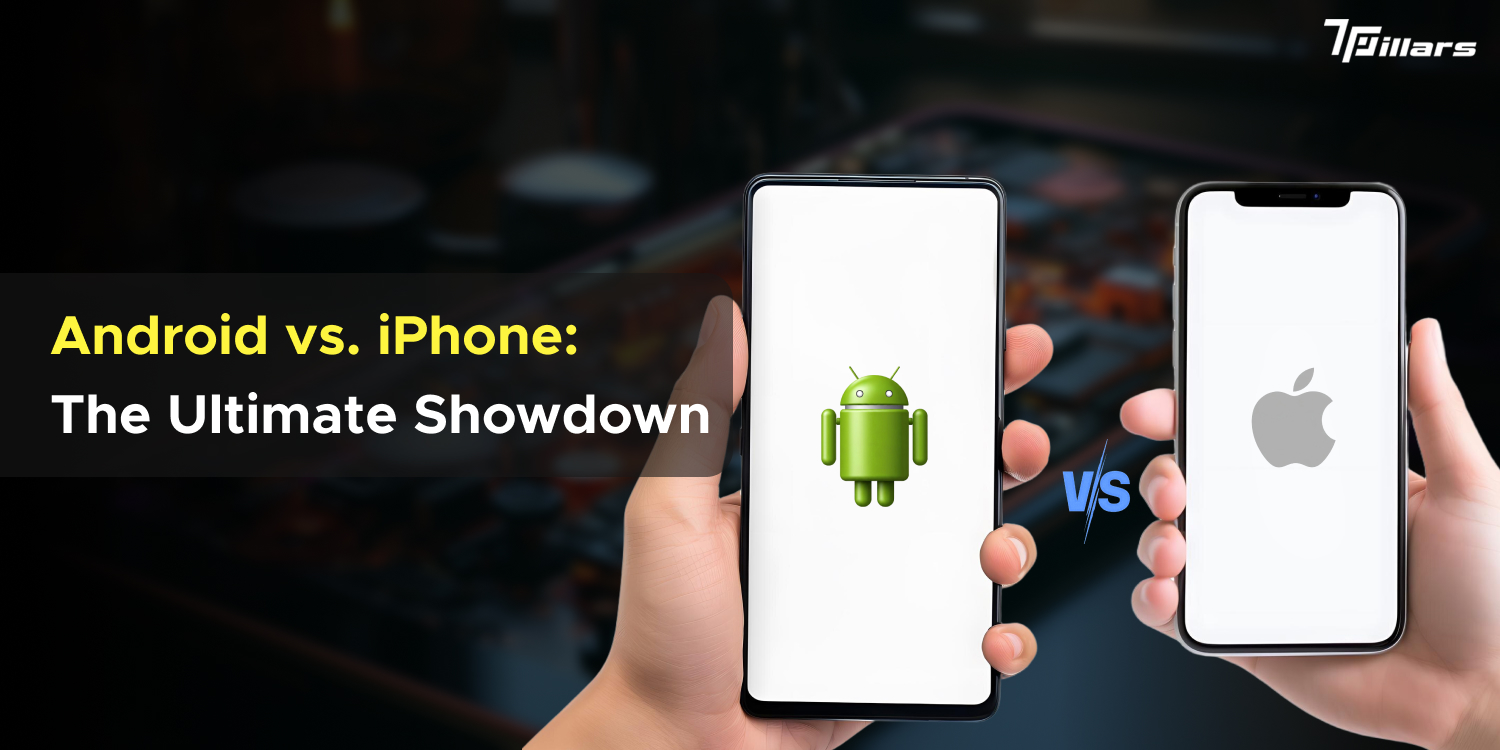
Two giants dominate the smartphone market: Android and iPhone. Whether you use an Android smartphone or an iPhone, people have been discussing this rivalry for ages. But what makes these operating systems so different, and how do they meet the needs of different users worldwide? An Android app development company is vital in ensuring seamless integration with these services, enhancing the Android user experience.
Android has several devices in every price range, which could explain its popularity. From the most famous Samsung Galaxy series to the affordable models, Android allows customers to have a choice.
Android has this disadvantage because it is open source, meaning users can access the system and change anything they want, from the interface to default apps loaded with the operating system. An Android app development company can help navigate these challenges and create apps that provide seamless and secure experiences for users across all devices.
Android vs. iPhone: Which Is Better for Multitaskers?
Additionally, integration with other Google services—such as Gmail, Google Maps, and Google Drive—is a good fit for users who often work with these tools. An Android app development company is vital in ensuring seamless integration with these services, enhancing the Android user experience. On the other hand, the iPhone focuses on simplicity, consistency, and security. No other extra hub or application is required to make it function properly. Apple’s iOS has always been characterized by its fantastic, easy-to-navigate interface, which looks quite polished.
This is because the iPhones’ hardware and software are closely linked, which makes them perform very well. Apple’s App Store has always had a reputation for quality, the selective apps it offers, and Apple’s attention to security, which means your data remains safe. Updating older devices frequently and being associated with a high-quality build make the iPhone the go-to device for many. A qualified iPhone app development company operates as a guide through Apple’s strict guidelines to guarantee app quality, which lowers rejection risk, thus reducing costs and development time.
Hence, whether one opts for customization and plenty of choices, Android still can provide plenty of advantages or, on the flip side, adheres to minimalism and tight security as the iPhone offers. It’s a judgment call between the two options and what each considers essential in a smartphone. This seems like a never-ending war, so what do you do, and which side are you on? An Android app development company can help develop tailored apps that leverage the full potential of Android’s customization options, ensuring optimal functionality and user experience.
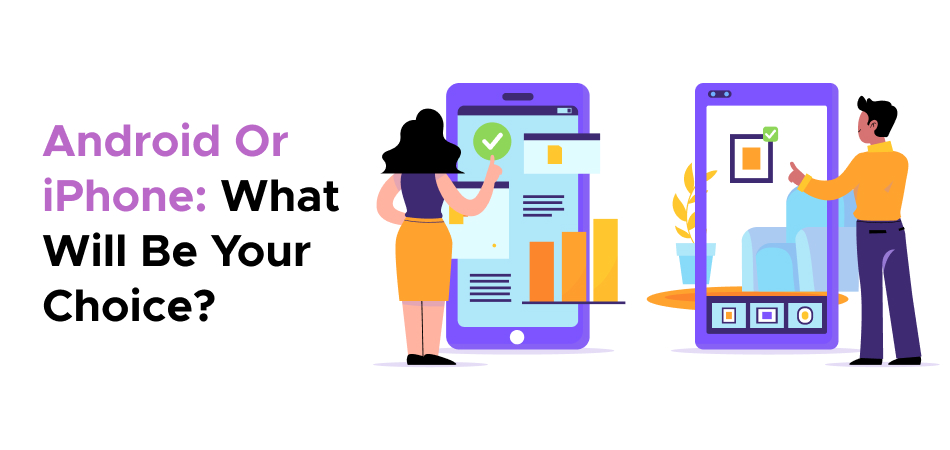
Global Analysis of Market Share of Android over iOS
Two dominant systems, Android vs. iPhone, have long ruled the global smartphone market. Both have gained users’ appreciation and acceptance, and their market shares constantly fluctuate. Knowledge of the rates of this confrontation worldwide gives information about consumers’ preferences and trends.
- Android’s Global Dominance
According to recent statistics, Android remains a significant stake in the smartphone market. Smartphones running on Android OS, which is used in most phones manufactured globally, including Samsung, Xiaomi, Oppo, Google Mobile, etc., have a market share of about 70-75%. Android’s presence on a staggering number of devices, from the entry-level to the cutting-edge, front and center, allows it to do so.
This diversity makes Android the most popular system, especially in the developing states, where inexpensive and good smartphones are needed. Moreover, Android is an open operating system that enables manufacturers to embed their features; therefore, it has become popular.
- iOS: A Premium Contender
Although iOS’s market share is smaller than that of Android, it has a stable position, though it is losing 25-30% of the global sales of mobile devices; the iPhone is the only device to run on iOS, which is preferred in North America and Western Europe as users value design, simplicity, and security.
The dedicated clientele, continuous development, and advertisement ensure that iOS always has a significant stake in the Android vs. iPhone competition. iPhone sales remain stable, and Apple remains one of the leaders in smartphone production.
Trends and Future Outlook
Prospectively, the research found that the market share differences between Android and iOS are expected to persist. Android has a more significant proportion because it is cheaper and customizable, while iOS will always target premium, secure, and integrated system clients. Both of them control the worldwide smartphone market, and they are working on the creation of further development of mobile technology. An Android app development company can help businesses tap into Android’s vast market share by creating innovative and customizable apps that meet users’ diverse needs.
Android vs iOS Market Share Australia
Mobile operating system market share regarding Android vs. iPhone in Australia – Statistic. Hence, the smartphone section is the most preferred in Australia for Android and iOS, as both are competing to capture the market. These two social media platforms have been in close competition regarding their user demographics and purchase affordability levels in this region.
- Android Market Share Australia
Android dominates the Australian smartphone industry and has approximately 55-60% market share. Android is all-encompassing to the manufacturer; it always has a lot of devices, such as Samsung, Google, Oppo, Xiaomi, etc. This variety enables Android to meet various market parts, such as the low-end and high-end markets, by providing flagship phones. Many consumers prefer Android in Australia due to its low cost, high level of adjustability, and varied options.
- iOS Market Share in Australia
Apple’s proprietary iOS is also well set in Australia, being at par with a 40 to 45% market base. The iPhones are popular in urban Australia because of their sleek appearance, compatibility with other Apple products, and user loyalty. British Apple’s effective marketing and reputation for the timely release of updates and secure devices have contributed to the sustenance of the iOS position in Australia. Additionally, an iPhone app development company plays a significant role in maintaining the ecosystem by creating apps tailored for iPhone users. Another factor rousing the degree of purchasing premium gadgets such as the iPhone in Australia is the higher purchasing power among Australians.
- Trends and Future Outlook
The battle between Android vs. iPhone in Australia has been closely fought, as Android margins slightly over iOS in general market share. iOS, on the other hand, is still chugging along and mainly does well with high-end devices. The company has been bringing updates to the iPhones, especially the new iPhone models and iPhone features, into the market, and its emphasis on privacy and cyber security retains its customers.
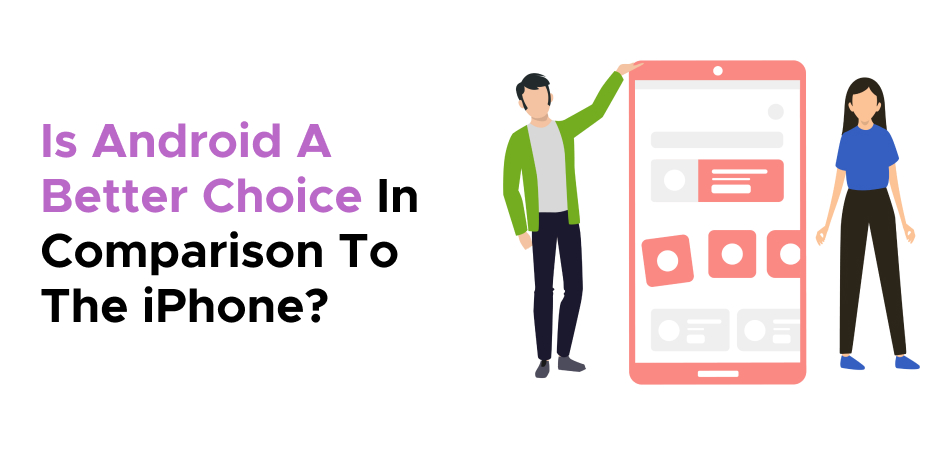
What is Android App Development?
Android app development means designing application software for gadgets that operate under the Android OS. Android, as an open operating system, can be configured to develop applications that can be distributed through the Google Play Store. These applications can run from miscellaneous games to highly productive business platforms, and they can be designed for smartphones, tablets, wearable devices, smart TVs, and other Android-compatible devices. An Android app development company can help bring your ideas to life by creating custom apps tailored to meet the particular needs of your target audience across various Android devices.
- Tools and Technologies: Java dominates AndroidKotlin, which is also widely used because of its concise and expressive nature. Developers design and code the apps, creating an integrated development environment called Studio. Some of the features allowed in Android Studio include coding a system, debugger, and app caution environment.
- App Development Process: The process of Android app development generally follows these steps:
- Planning: Let’s define the app’s target audience and key characteristics.
- Design: Designing the User Interface, or UI, and making wireframes.
- Development: Implementing the code in the Android-based application in Java or kotlin.
- Testing: Materialization of the objective of guaranteeing the app operates efficiently on diverse gadgets.
- Deployment: Install and Download the APK file on Android: Installing the Android application on Google Play Store.
- Challenges: Topics that can be challenging in Android app development include device fragmentation, the variation in the sizes of the screens and Android operating systems, security, and optimizing battery use and execution speed. However, developers can effectively surmount these barriers with updates on continuous Google analytics and tools.
What is iOS App Development?
The iOS is the platform for application development targeting compatibility with iPhones, iPads, iPods, and all portable devices using iOS as the operating system. This application has to be published in the Apple App Store. Explicit activities include creating the application’s graphical user interfaces, coding and implementing it, and testing it when it is to be run on various Apple gadgets. The main functions of an iPhone app development company involve delivering optimized systems that work effortlessly for iPhone users.
- Tools and Technologies: The major languages used while developing iOS applications are Swift and Objective C, but Swift is mostly commonly used since it is more updated and easier to use. To build, test, and debug applications, fellows utilize the integrated developers environment Xcode, a tool developed by Apple. Organized using excellent features like a graphical interface builder and iPhone features such as iPhone and iPad simulators, Xcode has many facilities that can hardly be found in any other IDE.
- App Development Process: The process of iOS app development typically follows these steps:
- Planning: Identifying the app’s role, recipient base, and functions.
- Design: Design prototypes in wireframes and design the user interface (UI) that complies with Apple’s human interface gadgets.
- Development: The writing part involves writing the app’s code using Swift or Objective- C languages.
- Testing: The app is consistent with multiple iOS devices and iOS versions.
- Deployment: Submitting the app to the Store and going live.
- Challenges: Difficulties intrinsic to iOS Application Development are – compliance with the ‘app store’ policies, multiple iOS devices, and compatibility with constant iOS upgrades. But again, there are solid solutions for most of these problems in Apple’s development ecosystem.
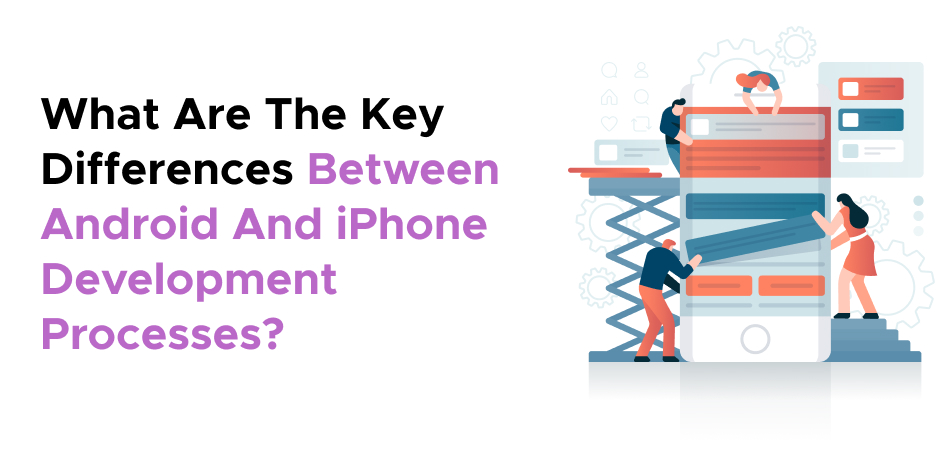
Key Differences – Android vs iOS App Development
Two significant platforms dominate the market for mobile app development: Android and iOS. Although they provide a means for developers to develop mobile applications, the process, methods, and resources vary immensely. Knowing these differences is very important in deciding which platform is best for which site, depending on the project’s needs and audience. An Android app development company can guide you through these differences and help you determine the best approach for building your app on the Android platform.
- Programming Languages
One of the main distinctions between creating applications for Android and iOS is the languages that can be used.
Android development is usually done in Java or, in the more recent Android OS version, in Kotlin. Java is an old but much more general language, while Kotlin is a much newer and enhanced language that Google has adopted because of its short and safe syntax, which is compatible with Java.
iOS development, in contrast, relies mainly on Swift and Objective-C. Swift is a younger language developed by Apple deemed faster and safer than Objective-C, a C-based language. The language used affects the speed of the application, the time required to create it, and the effort required from developers. An iPhone app development company leverages these languages to develop efficient and high-performance applications, ensuring they meet the standards needed for iOS devices.
- Development Environment
There is also a difference in the development environment for Android and iOS developers.
Android OS developers employ Android Studio, a fully open-source IDE developed by Google. As you have noticed, it offers a range of options for coding, debugging, and testing Android applications. Currently, Android Studio supports both Java and Kotlin languages. It provides features like an emulator to test the application through specific virtual devices.
Chip-based developers working on iOS phones depend heavily on Xcode, an Apple-integrated development environment. Xcode allows you to write code in Swift and Objective-C and provides aids such as Interface Builder, seed, simulators, and debuggers specific to iOS devices. However, it is available only for MacOS, which makes it difficult for many users who do not use Mac. An Android app development company can offer an alternative by providing cross-platform development services that allow flexibility across Android and iOS platforms.
App Store Guidelines and Publishing For this assignment, we will consider Apple’s publicly available guidelines for the App Store alongside the App Store to es.
It has become a policy that apps should be published on both platforms, but with some conditions to follow.
Applications for Android are distributed on the Google Play Store. The process of an application in the Google Store is less strict and faster than that of iOS, where developers can easily upload an application.
Mobile applications in this environment are submitted and distributed through the Apple Store, where Apple has measured their specific guidelines. It is a more thorough process, and inquiries usually concern app quality, how it functions, and whether it conforms to Apple Human Interface Guidelines. Such a process could take more time, but the app available on the platform will meet higher standards or quality levels.
- Device Fragmentation
One of the issues that Android application developers face is the fragmentation of devices.
It makes Android available for purchase to countless clients who own devices from different manufacturers with different screen dimensions, configurations, and Android operating system versions. Unfortunately, this results in higher fragmentation, meaning developers spend more time testing and optimizing.
First, iOS has a more regimented market—fewer devices (iPhone, iPad, iPod), and the hardware and software are much more alike. This helps eliminate product fragmentation and enhances the development and testing process.
- User Interface (UI) Design
UI design also differs between the two platforms in that for the Android platform, UI design mainly focuses on a functional and user-friendly design. In contrast, for the Apple platform, UI design works more involved, going so far as to have a design ethic.
Since the Android platform is open, most apps developed for it are more versatile regarding layouts and designs. Developers have enhanced chances of tweaking elements of the user interface.
iOS apps are bound by Apple Human Interface Guidelines, which maintain the applications’ look and feel. This leads to a consistent user interface in which developers follow set standards.
Android App Development – Advantages and Disadvantages
Nevertheless, creating Android apps has considerable benefits. However, as in any process, there are also disadvantages. The provided information can be helpful for developers who choose between the platforms and businesses that could be interested in adopting the platforms as their primary tools. A reliable Android app development company can assist in leveraging the benefits of Android app creation while addressing potential challenges and ensuring the development of high-quality and efficient applications.
This blog analyses the advantages of developing an Android app.
- Open-Source Platform
Android is open source; developers can access the source code and work on the systems. This makes it simpler and cheaper for developers to develop applications with specific features that suit some requirements.
- Large User Base
Android is the market leader, as billions of people actively use it. Android applications benefit businesses today with a large customer base, especially in developing countries.
- Customization Options
Android also has a significant advantage in terms of program design and function. It includes third-party libraries and tools, allowing developers to build specific functionalities and design the app’s interface.
- The Channel Flash
This multiple distribution channel involves selling products using several channels at once.
Android applications can be distributed through marketplaces or websites in addition to the Play Store, which gives them more opportunities.
- Cost-Effective Development
In general, developing Android applications is more inexpensive than developing other platforms. The tools and resources associated with Android are available at a low or no cost, and it is an open platform that lowers licensing costs.
Disadvantages of Android App Development
- Device Fragmentation
Android is implemented on many products with different screen diagonals, specifications, and OS versions. This increases the time it takes to test and optimize a site because it is required to be compatible with numerous devices. An Android app development company can help streamline this process by ensuring your application is tested and optimized for various Android devices, providing a brilliant user experience across different configurations.
- Security Issues
Android, in particular, is more vulnerable to these issues because it is an open-source platform. Hence, developers must focus more on developing security measures for their apps and users’ data.
- Longer Development Time
Android is more versatile than the previous one, but working with its platform means accommodating many devices, which can slow the application development process compared to other platforms, such as iOS. An Android app development company can help navigate these challenges by optimizing the app for multiple devices, ensuring smooth performance and a better user experience across different Android models.
- App Store Approval Process
Android has more distribution opportunities, but the Google Play Store has a less strict review policy than iOS. This may lead to the acceptance of lower-quality apps, which puts much pressure on users with too many applications to sort through.
- Performance Issues
Because of this, different Android devices can have various performance levels. That means even though some of the features may be promising in enhancing the app’s performance when it’s tested on high-end devices, it may experience poor performance on lower-end devices, and hence, customers may be put off.
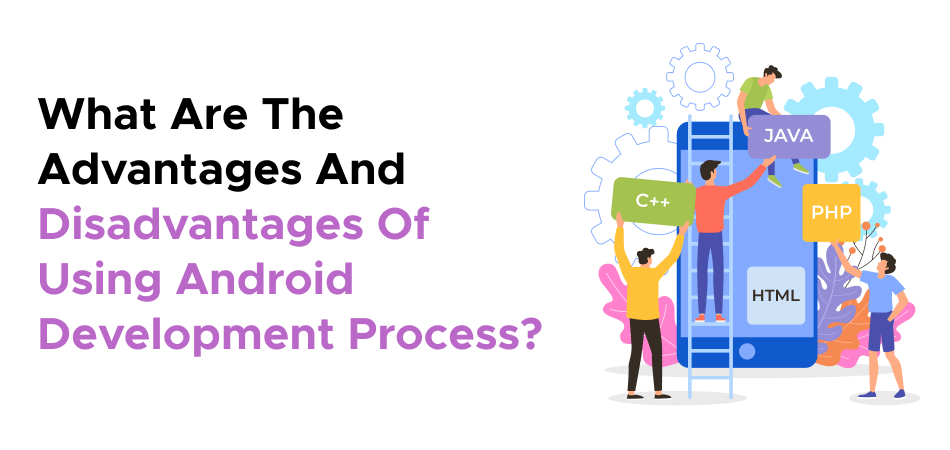
IOS App Development – Advantages and Disadvantages
There are unique opportunities and peculiarities in iOS application development. These pros and cons will help developers and businesses choose the iOS platform for their apps.
Benefits of iOS Application Development
- Higher Revenue Potential
Specifically, app use and in-app purchases are notably costlier among iOS users than Android users. This, of course, makes iOS attractive for developers targeting higher revenues or premium markets.
The third principle is consistency and the optimized experience of the user.
This controlled environment ensures iOS applications provide a high-quality user experience across Apple devices and iPhone features. Because fewer types of devices are used, developing and optimizing these applications is much easier, which results in fewer bugs and higher satisfaction.
- Strict App Store Guidelines
This is because Apple’s App Store policies are very tight. Thus, only the best apps from developers find their way to the markets. This encourages a more trusted environment for users to use these applications because they will most likely encounter well-designed and well-functioning applications. An iPhone app development company is crucial in helping developers create apps that meet these high standards, ensuring they are well-designed and optimized for iOS users. A dedicated Android app development company can help build applications that adhere to best practices, ensuring that apps are designed and developed to meet high standards, even with the more flexible nature of the Google Play Store.
- Enhanced Security Features
iOS has always been considered safer than the other platforms. The elements such as App Sandboxing and rigorous App Store review mean developers can build apps with highly secure envelopes to protect users’ data vigorously.
- Less Device Fragmentation
iOS is better positioned than Android because it only supports specific Apple devices like iPhones, iPads, and iPods, which does not scatter numerous companies. This makes the development and testing process easier since developers do not have to consider optimization for many devices.
Drawbacks Of Developing An iOS Application
- High Development Costs
In most cases, iOS development uses more costly tools and resources than other apps for various platforms. Access to macOS is required to use Xcode, and the submission fees to the App Store are much higher than to Google Play, making it more expensive to develop.
- Read Apple’s strict App Store Review Guidelines.
Stringent rules in Apple’s IT store help properly scrutinize all applications. However, they are disadvantaged because the application might take a long time to approve. Sometimes, applications are rejected because they do not fit the design or functionality criteria, which delays development time and increases expenses. An iPhone app development company understands Apple’s strict guidelines to verify that apps fulfill criteria and avoid rejection, thus enabling developers to save development time and costs.
- Limited Customization Options
iOS has much more stringent design and functionality guidelines than Android, limiting customization. Maintaining Apple’s Human Interface Guidelines can be significantly limiting for developers and creativity.
- Smaller Global Market Share
iOS is widely popular in places such as the United States and Europe, although Android holds a slightly better market share worldwide, especially in developing countries. Depending on the target market, this could hinder an app’s ability to reach potential users.
- Dependency on the Apple Ecosystem
Developing applications for iOS depends heavily on Apple’s environment and iPhone features. Apple expects its developers to work within its solutions, the Xcode IDE, and the macOS. This dependence on proprietary tools and services can also restrict extensibility and limit developers anticipating a more broad platform-oriented approach.
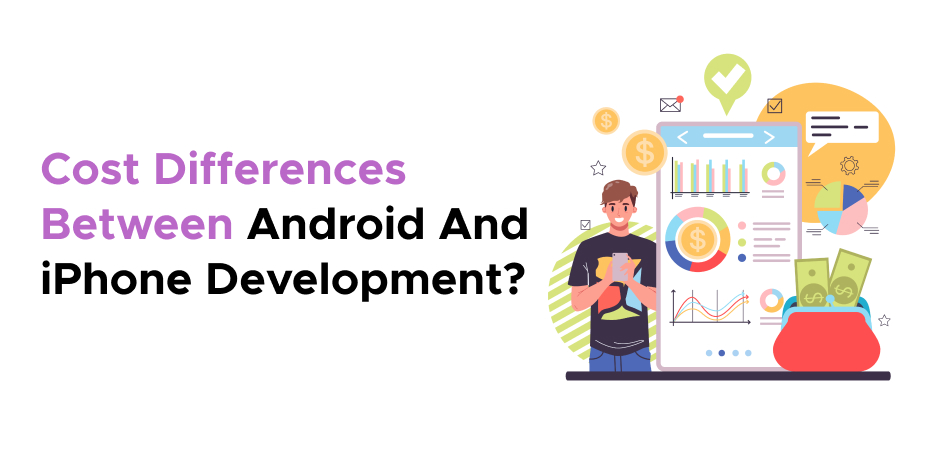
How Much AUD is required to develop an Android application in Australia?
The price of developing an Android application may differ significantly. It will depend on the app’s complexity, design, requirements, and development team experience. The cost will also depend on the number of functions, external and internal design, and necessary functionality. An Android app development company can provide a detailed estimate based on these factors, helping you understand the costs of bringing your app to life.
Factors Influencing Cost
- App Complexity
Most single-value propositions require basic tasks, such as to-do list applications or calculators, and cost between AUD 10,000 and AUD 40,000. More complex applications with variable choices (such as trading goods online or through social networks) will cost from AUD 40.000 to AUD 100 000.
- Graphic Design and User Experience (UX)
Custom design and well-desired User interfaces help to increase the costs considerably. Sound design and UX can cost thousands more if done correctly within an app.
- Developer Expertise
The rates paid to Australian Android developers range from AUD 50 to AUD 150 per hour, depending on the freelancer’s location. Senior developers or even agencies could cost a bit more. An Android app development company can provide a team of experienced developers at competitive rates, ensuring you get quality development within your budget.
- Maintenance and Updates
Periodic maintenance and ongoing improvement activities will consume 10 to 20 percent of this cost, depending on the application and change one needs after a longer run.
How Much Does It Cost to Build an iOS App in Australia?
Overseas costs of developing an iOS app are about the character, design, options of operation the application allows, and the specialists engaged in the project. The prices usually stand between 10,000 and 250,000 AUD and above.
Factors Influencing Cost
- App Complexity
Utility applications or applications that provide basic information most often cost between AUD 10,000 and AUD 40,000. Sophisticated applications, such as a shopping cart or a social networking application, cost between forty thousand Australian dollars and one hundred twenty thousand Australian dollars at most. Where an app requires integrating features such as augmented reality (AR), artificial intelligence (AI), or high-end games, the cost may rise to over AUD 200,000. In collaboration with an iPhone app development company, clients can create diverse price-level apps that adhere to their iOS requirements.
- Graphic Design and User Experience (UX).
If very fine or much design work is done on custom UI/UX designs with better-looking and cleaner interfaces, more costs are accrued due to extra complexities and features such as advanced animations.
- Developer Expertise
Its cost is determined by several factors, including the developer’s experience and geographical location. According to current data, experienced Australian developers charge AUD 60–150 per hour; however, the numbers can be significantly higher if the team is favored and skilled.
- Maintenance and Updates
Subsequent versions, maintenance, and sustainability costs are, as a rule, 15–20% of the app’s initial cost per year and depend on the app’s complexity and the need for feature updates.
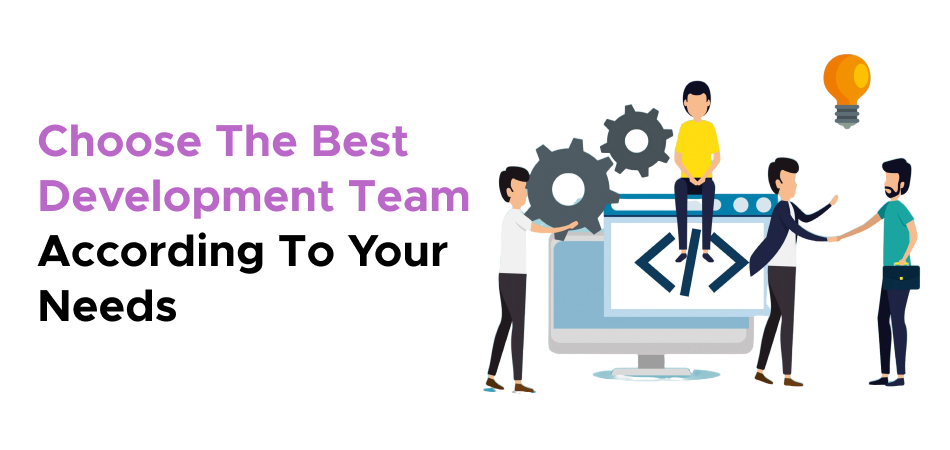
Decision Time – Choosing the Right Platform for Your Mobile App Development
One of the most critical decisions in application construction is choosing the right platform for mobile application development. This can impact business outcomes as well as users’ levels of satisfaction. The two most popular today are Android and iOS, and as vibrant platforms, each has strengths and weaknesses. Below are a few factors you must consider to select the right option.
- Target Group and Market Coverage
When you target international guests, Android is more beneficial. Since Android has more market share worldwide, particularly in developing countries, it is advantageous to create an Android app to reach a more significant number of users. At the same time, iOS often leads in sales and is very popular in the United States, Europe, Australia, and other areas with high incomes. If you plan to reach these targets, it is more effective to create an iOS application.
- Budget and Development Time
The overall cost of developing an iOS over an Android is higher in terms of initial expense price, such as tools, macOS, and development. Furthermore, creating the iOS platform is relatively easy compared to others, but it consumes more time if one follows Apple’s norms closely.
Developing an Android application can be less expensive overall and even more so if you tap into the platform’s openness. However, time and cost can arise because the app user experience must be considered on different screen devices supporting distinct resolutions, other hardware, and various operating systems.
- Application characteristics and differentiation
More options within the Android operating system allow an application to have more outstanding design and adaptability than with the iPhone. The second and more important point is that with iOS, you must stay within the relatively rigid Apple’s Human Interface Guidelines, which may even cut some possibilities. However, iOS is way more uniform in its line of devices and thus is easier to make to run as it should.
Conclusion
Australia’s mobile app development market is progressing fast, and both operating systems have strengths. By balancing the advantages with the disadvantages and considering the opinion of target users, it is possible to make a decision that complies with the application’s growth strategy and goals.
The choice of platform is critical for producing business applications. This is why it is always more beneficial to turn to a skilled Android or iPhone app development company for your project, as this will help you achieve success quickly and with less effort.
In this constantly evolving context, the “7 Pillars” of application development company can be considered the main factor in selecting an Android or Apple iPhone application developer. Some are user experience, scalability, security, design, performance, marketing integration, and cost-effectiveness. Incorporating all these factors into consideration offers an appliance that will compete effectively in the market while enhancing the functionality of users’ mobile devices and a good interface.
Selecting the right app development partner can make all the difference in distinguishing your app from others in the market, whether for the Android or iPhone platform. Harnessing this expertise provides solutions that enable your business to stay relevant in the mobile market. Connect with our team today at 7 Pillars to help you make the best decision to grow your business.








